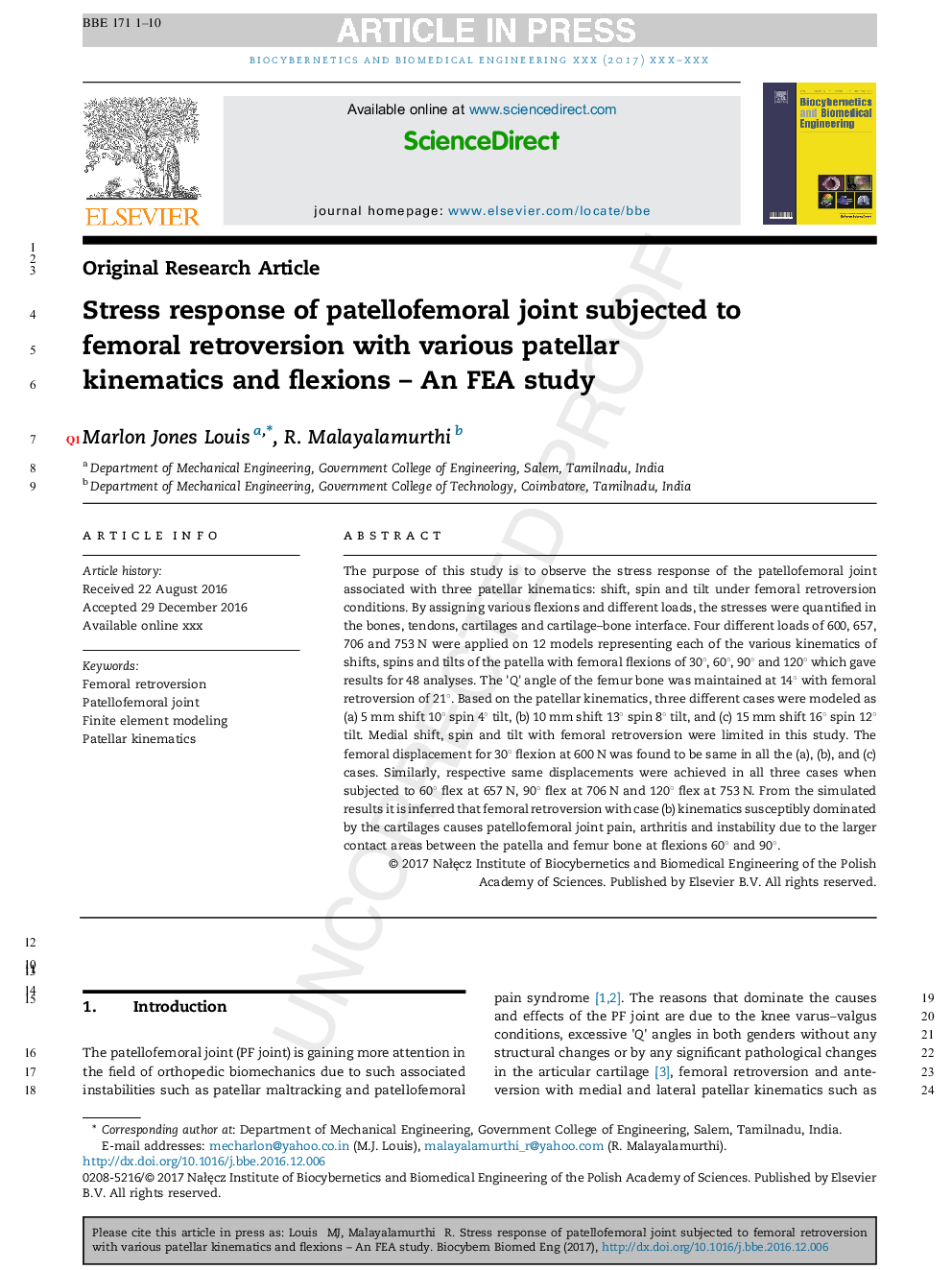| کد مقاله | کد نشریه | سال انتشار | مقاله انگلیسی | نسخه تمام متن |
|---|---|---|---|---|
| 6484236 | 1416077 | 2017 | 10 صفحه PDF | دانلود رایگان |
عنوان انگلیسی مقاله ISI
Stress response of patellofemoral joint subjected to femoral retroversion with various patellar kinematics and flexions - An FEA study
دانلود مقاله + سفارش ترجمه
دانلود مقاله ISI انگلیسی
رایگان برای ایرانیان
کلمات کلیدی
موضوعات مرتبط
مهندسی و علوم پایه
مهندسی شیمی
بیو مهندسی (مهندسی زیستی)
پیش نمایش صفحه اول مقاله

چکیده انگلیسی
The purpose of this study is to observe the stress response of the patellofemoral joint associated with three patellar kinematics: shift, spin and tilt under femoral retroversion conditions. By assigning various flexions and different loads, the stresses were quantified in the bones, tendons, cartilages and cartilage-bone interface. Four different loads of 600, 657, 706 and 753 N were applied on 12 models representing each of the various kinematics of shifts, spins and tilts of the patella with femoral flexions of 30°, 60°, 90° and 120° which gave results for 48 analyses. The 'Q' angle of the femur bone was maintained at 14° with femoral retroversion of 21°. Based on the patellar kinematics, three different cases were modeled as (a) 5 mm shift 10° spin 4° tilt, (b) 10 mm shift 13° spin 8° tilt, and (c) 15 mm shift 16° spin 12° tilt. Medial shift, spin and tilt with femoral retroversion were limited in this study. The femoral displacement for 30° flexion at 600 N was found to be same in all the (a), (b), and (c) cases. Similarly, respective same displacements were achieved in all three cases when subjected to 60° flex at 657 N, 90° flex at 706 N and 120° flex at 753 N. From the simulated results it is inferred that femoral retroversion with case (b) kinematics susceptibly dominated by the cartilages causes patellofemoral joint pain, arthritis and instability due to the larger contact areas between the patella and femur bone at flexions 60° and 90°.
ناشر
Database: Elsevier - ScienceDirect (ساینس دایرکت)
Journal: Biocybernetics and Biomedical Engineering - Volume 37, Issue 2, 2017, Pages 316-325
Journal: Biocybernetics and Biomedical Engineering - Volume 37, Issue 2, 2017, Pages 316-325
نویسندگان
Marlon Jones Louis, Malayalamurthi R.,